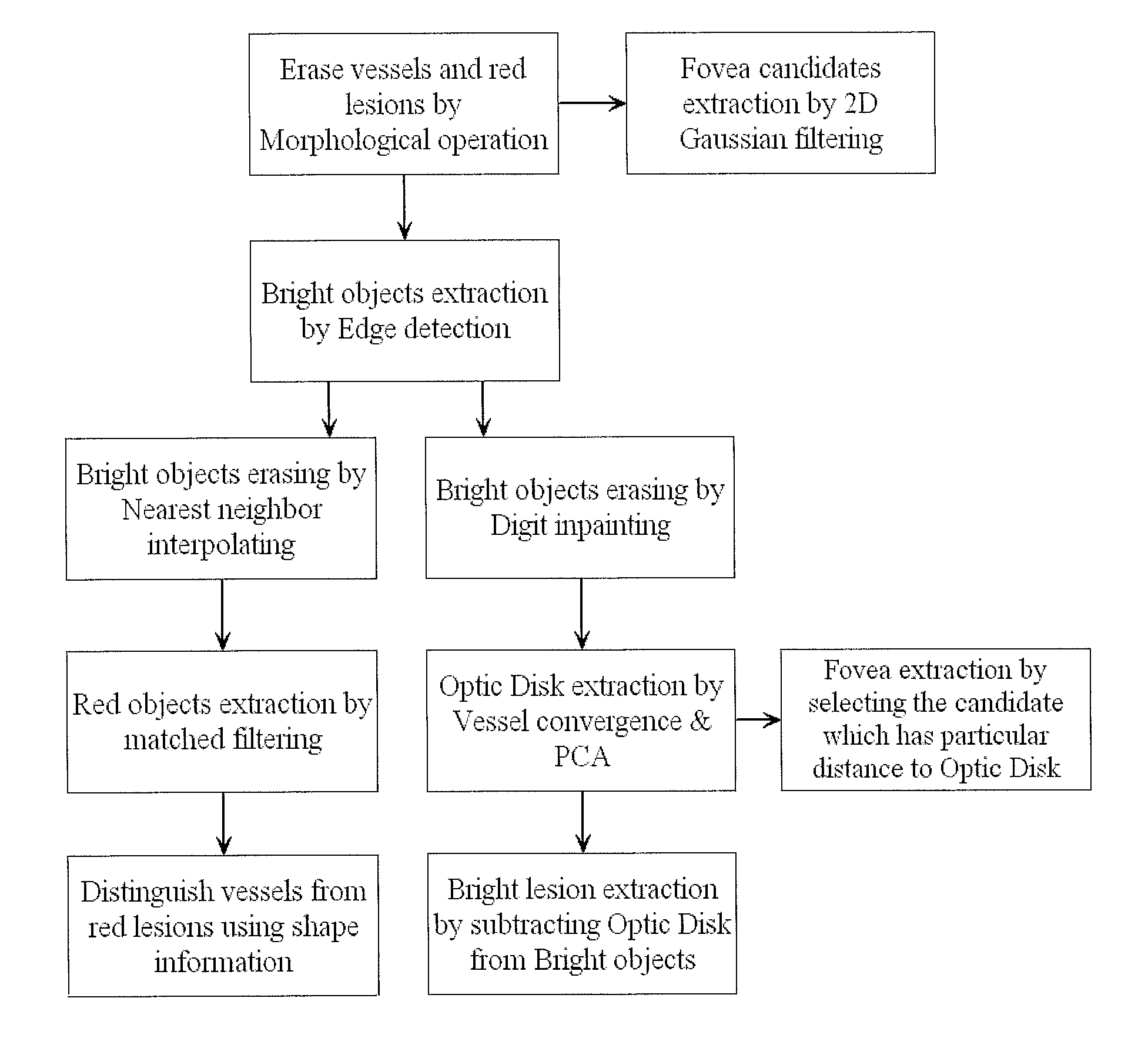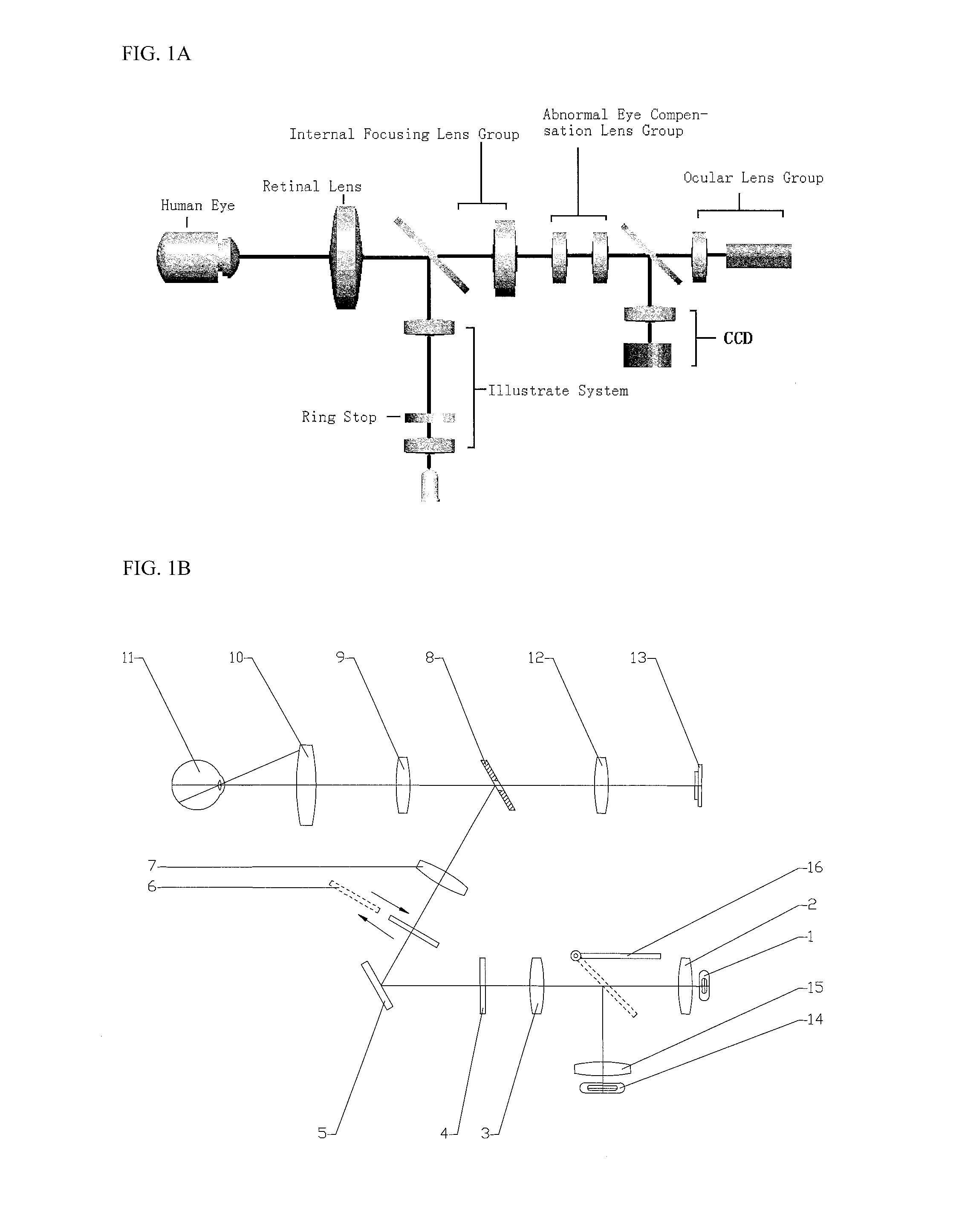Apparatus and method for non-invasive diabetic retinopathy detection and monitoring
a diabetic retinopathy and non-invasive technology, applied in the field of computer-aided technology for diseases diagnosis, can solve problems such as suppressing interaction among
- Summary
- Abstract
- Description
- Claims
- Application Information
AI Technical Summary
Benefits of technology
Problems solved by technology
Method used
Image
Examples
Embodiment Construction
Hardware Aspect
[0062]Although recent advances in optical instrumentation such as adaptive optics (AO), scanning laser ophthalmoscopy (SLO), optical coherence tomography (OCT) and non-mydriatic retinal cameras provide high resolution photos of retinal structure, the conventional ophthalmology-based method is time consuming because it requires extraction of lots of ophthalmological parameters, such as visual acuity, shape and size of optic disc, status of the anterior segment and fundus, thickness of vessels, and the distribution of retinal nerves by the ophthalmologist manually for decision making in diagnosis. Fundus camera has been adopted by ophthalmologists as one of the commonly used medical device to capture retinal images for clinical examination and analysis. It plays an important role for the quality of images. The first fundus camera in the world was developed by German company CAR ZEISS in 1925. The optical design and system structure have been improved significantly as th...
PUM
 Login to View More
Login to View More Abstract
Description
Claims
Application Information
 Login to View More
Login to View More - R&D
- Intellectual Property
- Life Sciences
- Materials
- Tech Scout
- Unparalleled Data Quality
- Higher Quality Content
- 60% Fewer Hallucinations
Browse by: Latest US Patents, China's latest patents, Technical Efficacy Thesaurus, Application Domain, Technology Topic, Popular Technical Reports.
© 2025 PatSnap. All rights reserved.Legal|Privacy policy|Modern Slavery Act Transparency Statement|Sitemap|About US| Contact US: help@patsnap.com



